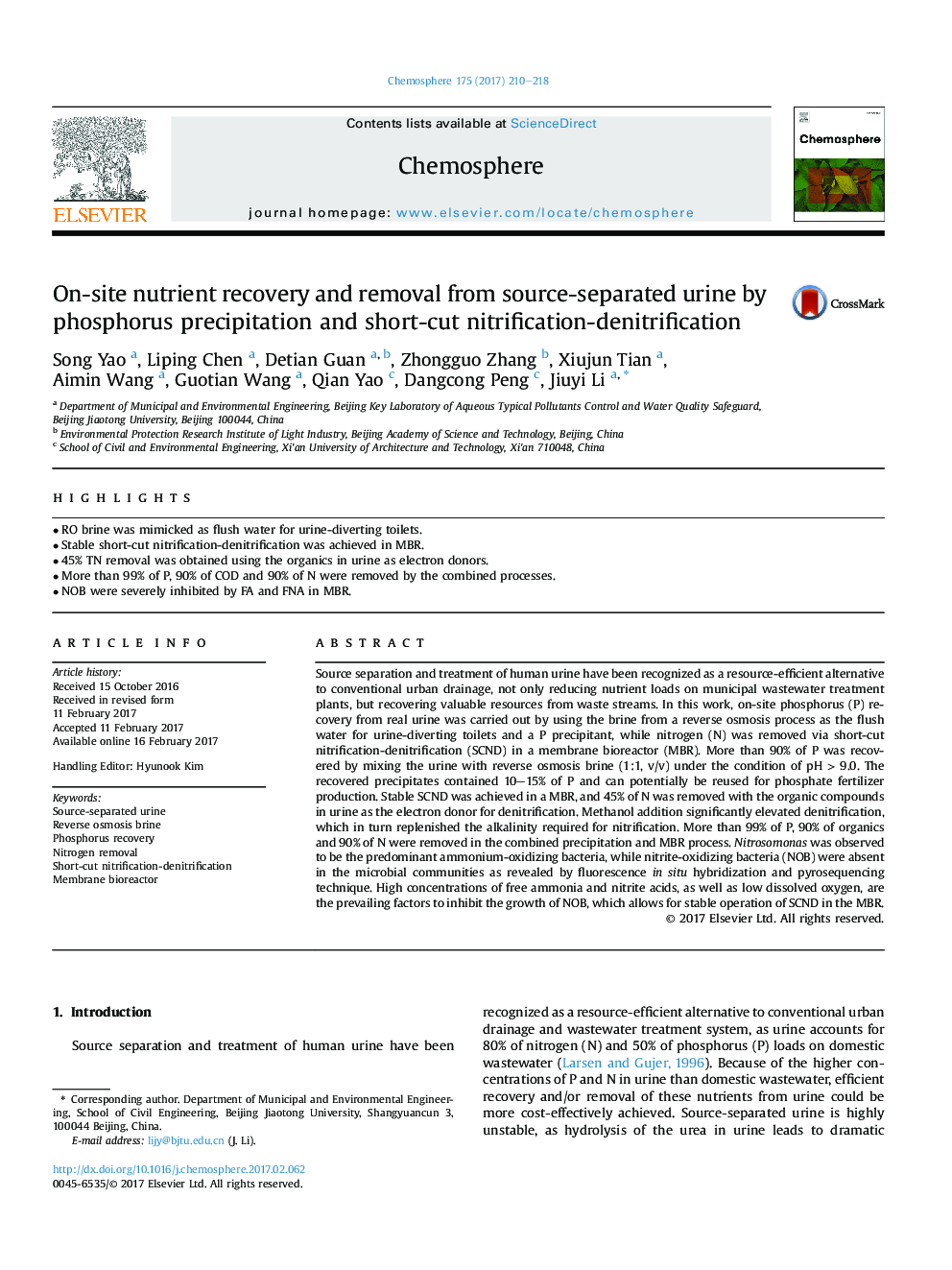| کد مقاله | کد نشریه | سال انتشار | مقاله انگلیسی | نسخه تمام متن |
|---|---|---|---|---|
| 5746515 | 1618796 | 2017 | 9 صفحه PDF | دانلود رایگان |

- RO brine was mimicked as flush water for urine-diverting toilets.
- Stable short-cut nitrification-denitrification was achieved in MBR.
- 45% TN removal was obtained using the organics in urine as electron donors.
- More than 99% of P, 90% of COD and 90% of N were removed by the combined processes.
- NOB were severely inhibited by FA and FNA in MBR.
Source separation and treatment of human urine have been recognized as a resource-efficient alternative to conventional urban drainage, not only reducing nutrient loads on municipal wastewater treatment plants, but recovering valuable resources from waste streams. In this work, on-site phosphorus (P) recovery from real urine was carried out by using the brine from a reverse osmosis process as the flush water for urine-diverting toilets and a P precipitant, while nitrogen (N) was removed via short-cut nitrification-denitrification (SCND) in a membrane bioreactor (MBR). More than 90% of P was recovered by mixing the urine with reverse osmosis brine (1:1, v/v) under the condition of pHÂ >Â 9.0. The recovered precipitates contained 10-15% of P and can potentially be reused for phosphate fertilizer production. Stable SCND was achieved in a MBR, and 45% of N was removed with the organic compounds in urine as the electron donor for denitrification. Methanol addition significantly elevated denitrification, which in turn replenished the alkalinity required for nitrification. More than 99% of P, 90% of organics and 90% of N were removed in the combined precipitation and MBR process. Nitrosomonas was observed to be the predominant ammonium-oxidizing bacteria, while nitrite-oxidizing bacteria (NOB) were absent in the microbial communities as revealed by fluorescence in situ hybridization and pyrosequencing technique. High concentrations of free ammonia and nitrite acids, as well as low dissolved oxygen, are the prevailing factors to inhibit the growth of NOB, which allows for stable operation of SCND in the MBR.
Journal: Chemosphere - Volume 175, May 2017, Pages 210-218